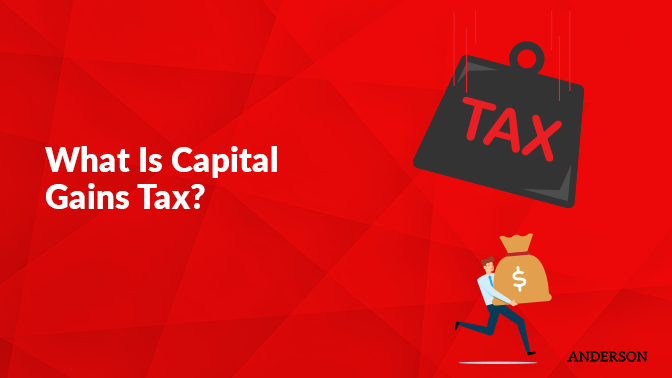
Key Takeaways:
- Capital gains tax applies to both short- and long-term assets that you realize during a specific period. Realized gains are those that you derive from an actual sale.
- The tax rates for short- and long-term capital gains differ, with long-term gains typically falling under one of three rates: 0%, 15%, and 20%.
- Some exceptions exist for certain investment gains, including investment real estate, which is also subject to a 3.8% net investment income tax.
- The maximum thresholds for long-term rates will increase for 2023 compared with 2022 figures.
Tax & Asset Protection Workshop
FREE LIVE STREAM
What Is Capital Gains Tax?
Capital gains tax applies to profits investors make when selling their investments and is due for the tax year in which you sell the investment. It takes effect whenever you sell an investment asset, such as stocks, bonds, and real estate. Depending on the length of time you own the investment, you may be liable for long- or short-term capital gains tax. Long-term capital gains tax applies to the profits you make on any investment you own for at least a year.
When Does Capital Gains Tax Apply?
If you own the investment for one year or less, then the profits from that investment will be subject to short-term capital gains tax. In general, the rates for long-term capital gains tax for 2022 and 2023 are 0%, 15%, or 20%, depending on your income bracket. The Internal Revenue Service adjusts these income brackets yearly. In contrast, short-term capital gains tax applies to investment profits realized within one year or less.
If you’re buying and selling assets that you hold onto for less than a year, you’ll be subject to a higher tax rate than for assets you hold longer than a year. For this reason, many investors choose to hold onto investment assets long-term, enabling them to reduce the amount owed for realized profits or to avoid capital gains tax altogether.
How Is Capital Gains Tax Calculated?
You determine whether you have a capital gain or loss from the difference between the amount you paid when you purchased the asset and how much you sold it for. If you paid less than what you receive from selling the asset, you have a capital gain, and it’s likely subject to capital gains tax. If you sell the asset for less than the purchase price, you experience a capital loss.
You might reduce the taxes on realized capital gains during the year if you also report capital losses for the same period. Because of this, capital gains tax applies to the net capital gain. Here’s how you can calculate your capital gains tax:
Find Short-term and Long-Term Gains
It’s not uncommon for investors to accumulate both short- and long-term gains. If this is the case, start by separating the short- and long-term capital gains. Add up all short-term gains, then do the same for your long-term profits. This gives you the total gains you’ve realized during the tax period. Only count those gains you’ve actualized, or sold, within the reporting period. Even if the value increases, the assets you’re holding won’t go toward your taxable gains since you haven’t sold them yet.
Determine Any Capital Losses
Do the same with any losses realized during the reporting period. Add all short- and long-term losses. You can deduct them from your total gains to offset the taxable income amount.
Deduct Losses from Realized Gain
After you have computed the total short- and long-term gains and losses, start deducting losses from gains to determine your net capital gains. For example, if you purchase a real estate investment for $50,000 and sell it two years later for $200,000, the total long-term capital gain is $150,000.
If you purchased another asset at the same time for $50,000 and sold it for $35,000 during the same reporting period, this would be a capital loss of $15,000 and you would then deduct it from your total gains of $150,000. This would give you a net capital gain of $135,000.
Apply the Appropriate Tax Rate
Depending on your income bracket, apply a 0%, 15%, or 20% tax rate to your net gains. The IRS outlines how each rate applies to specific income brackets, as follows:
| Filing Status | 0% Rate | 15% Rate | 20% Rate |
| Single | Up to $41,675 | $41,675 to $459,750 | Over $459,750 |
| Married filing separately | Up to $41,675 | $41,675 to $258,600 | Over $258,600 |
| Head of household | Up to $55,800 | $55,800 to $488,500 | Over $488,500 |
| Married filing jointly and surviving spouse | Up to $83,350 | $83,350 to $517,200 | Over $517,200 |
There are several instances when different tax rates apply beyond the three primary rates outlined by the IRS. For example, collectibles such as jewelry, art, and antiques are subject to a 28% tax rate on gains realized during a reporting period. Even if you’re in a lower tax bracket, the 28% rate still applies. If you’re in a higher bracket, 28% is the maximum rate for taxable gains on collectibles. Here are several other special considerations regarding taxable gains:
- Owner-occupied real estate: If you’re selling your primary residence where you’ve lived for two years or more, you can exclude up to $250,000 of the capital gains made on the sale. However, you can’t deduct losses from the gains you acquire for owner-occupied real estate.
- Investment real estate: Investment real estate works a little differently, where typically you can deduct for property depreciation. If you pay $50,000 for a property and later claim $5,000 in depreciation, this limits the initial price to $45,000 and creates a larger gap between your initial investment and any profits made from the sale.
- Investment exceptions: For investors in a high-income bracket, a 3.8% net investment income tax may apply to your investment income combined with any capital gains, as long as your modified adjusted gross income exceeds certain thresholds.
Are Capital Gains Considered Income?
They are a form of income. However, since these profits usually come from the sale of an investment asset, they’re taxed at lower rates, even when considering special investment circumstances. The rates for taxable capital gains will depend on how much you make in regular income.
Are There Exemptions from Capital Gains Tax?
One common exemption applies to capital gains you make when selling an owner-occupied residence. You might avoid capital gains tax altogether on profits made when selling your primary residence if:
- You’ve lived in the home for two years or more.
- Profits made from the sale equal $250,000 or more if your filing status is single.
- Profits made from the sale equal $500,000 or more if you’re married and filing jointly.
This exemption only applies once every two years. It doesn’t apply to short-term real estate assets you use as investment instruments, such as capital gains from flipping real estate.
Will Capital Gains Tax Increase for 2023?
The threshold for taxable gains increases in 2023. In 2022, the threshold for single filers and married taxpayers filing separately was $41,675 for 0%. For 2023, this amount rises to $44,625. If your total taxable income is less than or equal to $44,625 for the 2023 tax year, you’ll fall under the 0% rate. For those who earn more than $41,675 and up to $44,625, this means potentially avoiding capital gains tax.
For more information on capital gains tax and how it affects your long- and short-term investments, contact the team at Anderson Advisors. Our experts will help you navigate your current investments and assess where you’ll stand at the end of the tax year.
Free Strategy Session with an Anderson Advisor
Receive a detailed risk assessment to assist in lowering problem areas that could wipe out all of your assets with one wrong move. Speak with an Anderson Professional Advisor to get your FREE Strategy Session. Limited-Time Offer: FREE (a $750 value.)












